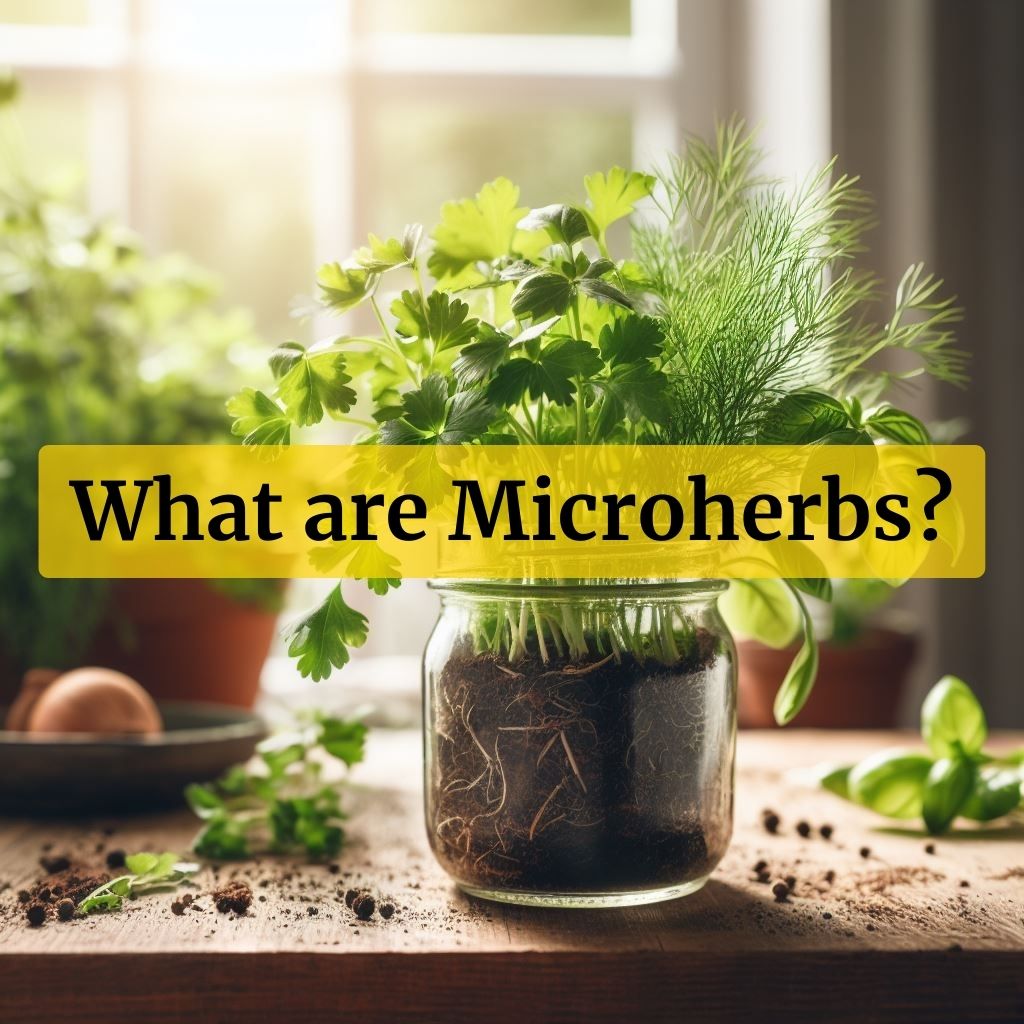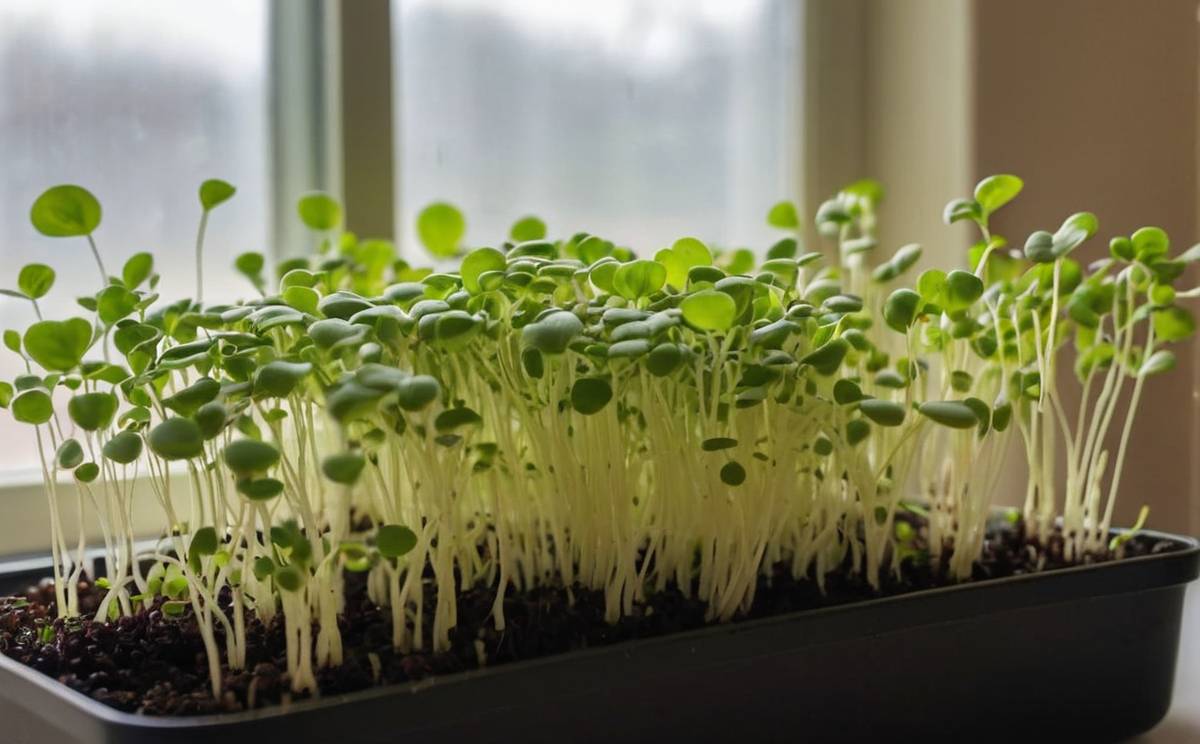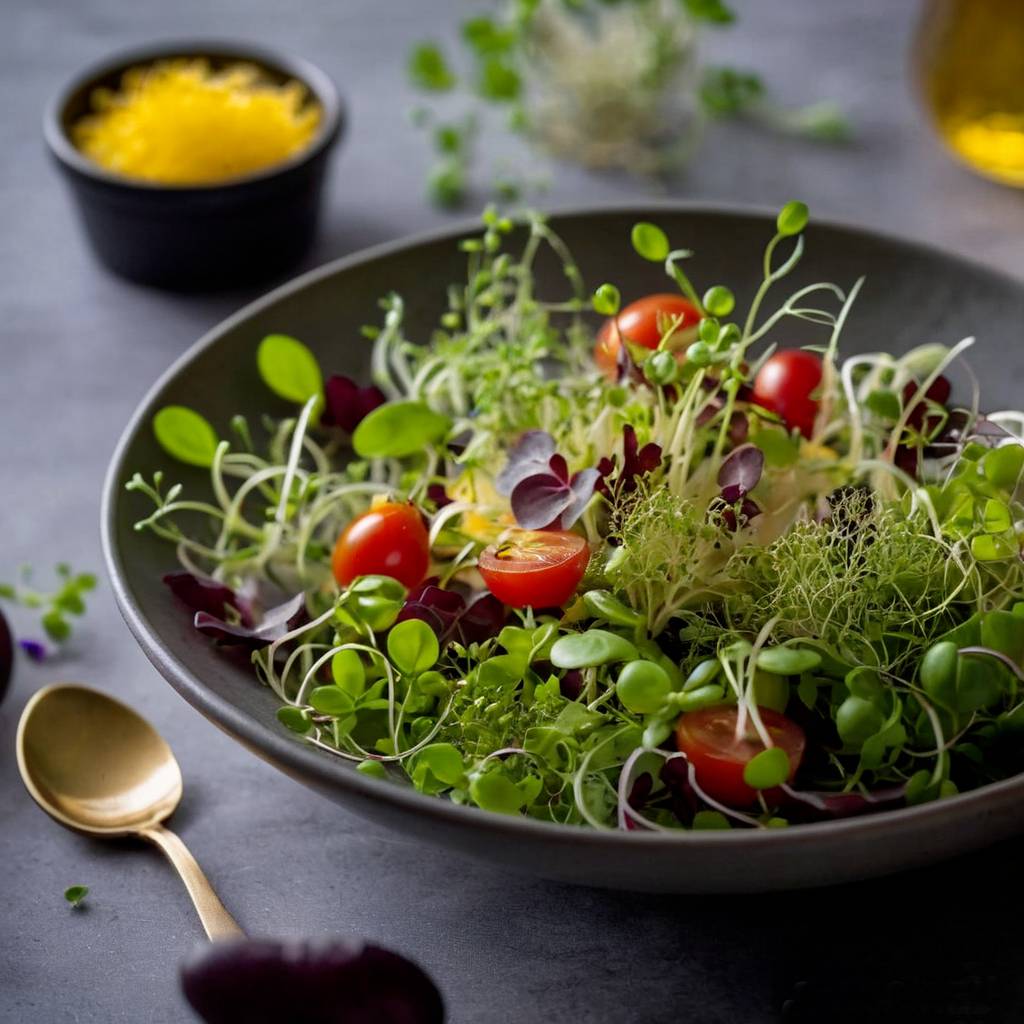
Microherbs, also known as microgreens, are exceptionally tender young greens that are harvested when the embryonic first leaves, or cotyledon leaves, have just emerged. They are also called “vegetable confetti” and are a tiny yet mighty phenomenon in the world of gardening and culinary delights. These aromatic greens are rich in flavor and add a welcome splash of color to a variety of dishes.
In this article
The Popularity of Microherbs

Microherbs, as the name suggests, are tiny herbs that pack a punch when it comes to flavor, aroma, and nutritional value. These miniature greens are typically harvested at a very early stage of growth, just after the first true leaves appear. Their diminutive size doesn’t diminish their impact; in fact, it amplifies it.
In recent years, microherbs have experienced a surge in popularity, finding their way into kitchens and gardens around the world. What sets them apart is their incredible intensity of flavor and a burst of vibrant colors, making them not only delicious but also visually appealing additions to your dishes. As an experienced gardener and home cook, I can attest to the transformative power of these small wonders.
Why Use Microherbs?

So, why should you consider adding microherbs to your indoor herb garden garden? Let’s explore the compelling reasons:
- Intense Flavor: Despite their small size, microherbs offer concentrated flavors that can elevate your culinary creations to a whole new level.
- Nutrient-Rich: Microherbs are packed with essential vitamins, minerals, and antioxidants, making them a healthy addition to your diet.
- Easy to Grow: These greens are perfect for both novice and experienced gardeners. They thrive in small spaces and are quick to grow.
- Year-Round Cultivation: With the right setup, you can enjoy fresh microherbs all year round, even in the heart of winter.
- Versatile Use: Microherbs aren’t limited to garnishing dishes; they can be used in salads, sandwiches, soups, and more, enhancing both flavor and aesthetics.
Cultivating Microherbs
Start by selecting the microherb varieties that suit your taste and garden conditions. Popular options include:
- Basil: Adds a sweet and aromatic touch to your dishes.
- Cilantro: Offers a fresh, citrusy flavor.
- Arugula: Imparts a peppery kick to your salads.
- Chives: Brings a mild oniony flavor.
Make sure to source high-quality seeds or starter plants to ensure a successful harvest.
The Perfect Growing Environment
Microherbs thrive in a controlled environment. Here’s what you need to create the ideal growing conditions:
- Containers: Use shallow trays, pots, or seedling trays to grow microherbs. Ensure they have good drainage.
- Soil: Choose a lightweight, well-draining potting mix enriched with organic matter.
- Light: Provide ample light, ideally 12-16 hours of indirect sunlight or fluorescent grow lights for optimal growth.
- Temperature: Keep your microherbs in a moderately warm environment, around 60-70°F (15-24°C).
- Watering: Mist the soil regularly to keep it moist but not waterlogged.
With these conditions in place, you’ll have a thriving microherb garden in no time.
Watering
Microherbs require consistent moisture to thrive. Keep the soil evenly moist, but avoid overwatering, as this can lead to root rot. Using a spray bottle to mist the soil surface can help maintain the right level of moisture without disturbing the delicate seedlings.
Lighting
Light is crucial for the growth of microherbs. Ensure they receive 12-16 hours of indirect sunlight daily, or use fluorescent grow lights if natural light is limited. Keep the lights close to the plants to prevent them from becoming leggy.
Thinning
As your microherbs grow, you may notice overcrowding. To ensure proper air circulation and prevent mold or disease, thin them out by gently snipping excess seedlings with scissors. This will also allow the remaining herbs to thrive and develop robust flavors.
Fertilizing
While microherbs don’t require heavy feeding, you can use a diluted, balanced liquid fertilizer once every two weeks to promote healthy growth. Be cautious not to over-fertilize, as this can lead to excessive foliage growth at the expense of flavor.
Harvesting Microherbs
Microherbs are ready for harvest when they have produced their first true leaves, usually after 2-3 weeks. At this stage, they are bursting with flavor and aroma.
To harvest microherbs, use clean scissors or a sharp knife to snip them just above the soil level. Be gentle to avoid damaging the delicate stems. You can harvest the entire plant or select individual leaves as needed.
Storage
To maintain freshness, store harvested microherbs in an airtight container or a plastic bag with a paper towel to absorb excess moisture. Keep them in the refrigerator, and they should remain fresh for up to a week.
Cooking and Eating Microherbs

Now that you’ve successfully cultivated and harvested your microherbs, it’s time to explore the exciting world of culinary creativity they open up.
Garnishing
The simplest way to use microherbs is as elegant garnishes. Sprinkle them on top of dishes just before serving to add a burst of color, flavor, and freshness. Microherbs can elevate even the most basic dishes to restaurant-quality fare.
Salads
Microherbs are a natural fit for salads. Toss them with your greens to introduce a variety of flavors and textures. Their tiny size makes them ideal for delicate and visually stunning salads.
Sandwiches and Wraps
Upgrade your sandwiches and wraps by adding microherbs. They provide a zesty punch and a delightful crunch that takes your lunch to the next level.
Soups and Stir-Fries
Sprinkle microherbs into hot soups and stir-fries just before serving. Their fresh flavors will infuse your dishes with a burst of herbaceous goodness.
Microherb Pesto
Get creative by making microherb pesto. Blend microherbs, nuts, garlic, Parmesan cheese, and olive oil for a unique twist on this classic sauce. Drizzle it over pasta, use it as a dip, or spread it on sandwiches.
Frequently Asked Questions
How do I know when microherbs are ready to harvest?
Microherbs are ready for harvest when they have produced their first true leaves, typically after 2-3 weeks.
Can I store harvested microherbs?
Yes, you can store harvested microherbs in an airtight container in the refrigerator for up to a week.
What are some creative ways to use microherbs in cooking?
Microherbs can be used as garnishes, in salads, sandwiches, soups, stir-fries, and even to make unique pesto.
Do I need special equipment to grow microherbs indoors?
No, microherbs can be grown indoors with basic gardening supplies and a sunny windowsill.
Are there any specific microherb varieties you recommend for beginners?
Beginners can start with easy-to-grow varieties like basil, cilantro, and chives for a successful microherb gardening experience.
As an experienced gardener, I can attest to the joy of watching these miniature powerhouses flourish and contribute to the beauty and taste of your meals.
Happy gardening!







